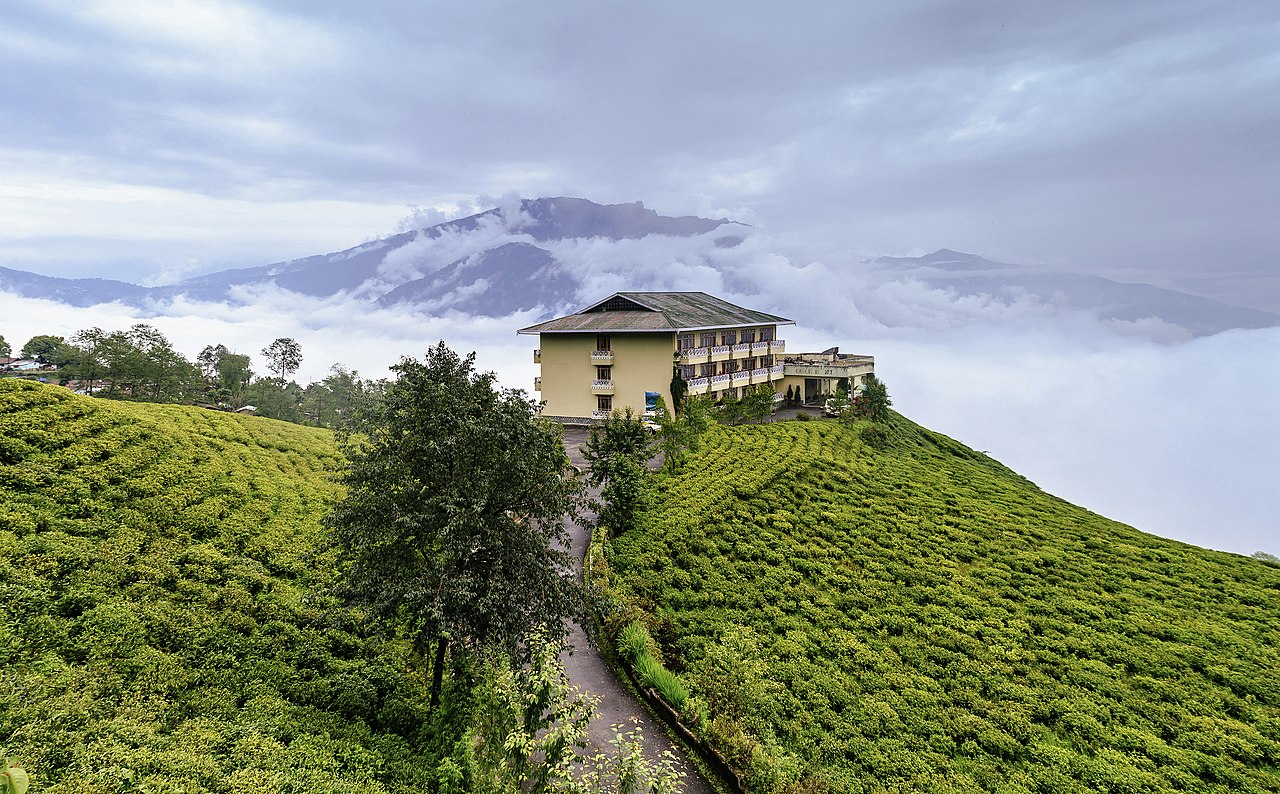Image above (credit : Wiki) shows Cherry Resort in the Temi Tea Garden in the beautiful state of Sikkim in north-east India.
During one of my daily internet excursions, I came across this BBC article on how to raise bilingual children. The author speaks Dutch and English and was raised by parents who followed the OPOL strategy, short for “one parent, one language.” So mom spoke only English and dad spoke only Dutch till the children were fluent in both languages. The article further discusses various strategies to teach children two or more languages.
I could not but help comparing this situation to my own childhood, which was typical of any middle class urban Indian child. In my own case, I learnt Marathi at home and Hindi outside playing with kids from Hindi speaking families; there was no formal introduction to either languages. English was introduced formally in school later on. And I also learned the grammar of Marathi and Hindi later in school.
If I could give an analogy to the environment described by the author of the BBC article versus the environment in India, it would be that of learning to swim. The OPOL strategy is akin to determining correct temperature, pH of water in the swimming pool and then introducing the children carefully to the water. Indian kids do not have this luxury. As soon as an Indian child is old enough to play outside, she is going to hear two or three languages that are different from her mother tongue. Going back to the swimming pool analogy, Indian kids are thrown into rivers with currents of different speeds and they learn to cope with it. I hope psychologists and brain scientists studying effects of bilingualism on brain would take up India as a case study.
Children are much more resilient than we give them credit for. When I was a postdoc in Italy, an Indian professor was visiting Italy on a sabbatical with his family. When they went back to India after two months, they found that their two kids had become fluent in Italian and were using it as a code language to pass on secret messages in front of their parents.
Most Indians are multilingual and understand languages and dialects that are closer to various degrees. So I understand a little bit of Punjabi, Bengali, or Gujarati. This is also a typical case for people who live on the borders of various states. They usually speak the languages of all neighbouring states.
This multilingualism is embedded in every aspect of Indian culture. For instance, if you consider the Indian classical music from North India (also known as Hindusthani classical music), the compositions in various Ragas were written in dialects and languages such as the Braj, Avadhi or Punjabi. So a musician practicing this music must sing in those dialects or languages no matter what her mother tongue is.
According to the 2011 census, India has 22 official languages, 121 major languages and 1369 mother tongues. A great example of India’s linguistic diversity is the Rupee note that has the denomination written on it in 15 languages.

Every language is part of a culture. Each language embodies a different and distinct array of cuisines, music, literature, folklore, customs, traditional clothing, geography, and history. When you imagine 1.4 billion people displaying such breathtaking diversity and yet move forward as a united nation, it defies imagination.
Coming back to bank notes, they are seen less nowadays since India adopted the UPI digital payment system. And if you are a foreigner visiting India, you can join the UPI as soon as you land at the airport, as Youtuber Karl Rock explains. No more plastic money and transaction costs! And it’s much safer than carrying cash around.
India elections: a miracle of democracy
India just concluded its general elections and the numbers are staggering. Spanning 44 days with more than 968 million eligible voters, the final turnout was 65.79%. 1.1 million polling booths were used with a total of 5.5 million electronic voting machines. Across the length and breadth of India, despite a scorching summer, 642 million voters participated and 312 million of them were women, making it the highest ever participation by women.
Only once before in India’s history has a Prime Minister won a third consecutive term, Pandit Nehru Ji. Heartfelt congratulations and best wishes to PM Modi Ji, for winning a historic third consecutive term. We are deeply grateful for your visionary leadership.
There are many moments when one can feel proud of one’s country. Winning gold medals, or a Cricket World Cup (Go Team India!) but watching democratic traditions being observed is something special. My eternal gratitude to the Election Commission of India (ECI) and the countless election officials who toiled in unbearable heat to make this process a great success.




